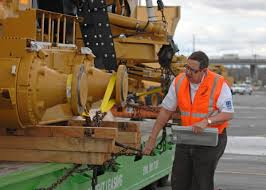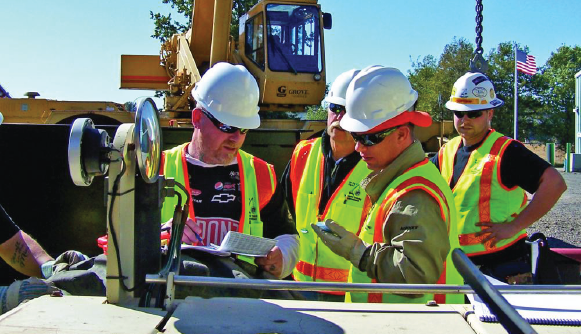Moving heavy equipment from one site to another is important in construction. It is a difficult chore and carrying big items comes with its own set of dangers. But, if done right, you will be able to handle heavy machines with ease. Knowing how to move heavy equipment safely and effectively is critical. Here’s all you need to know about transporting big gear and equipment.

Examine risks
Conducting a comprehensive risk assessment is the first step in transporting heavy equipment. This will enable you to discover any possible threats and cut them. Accidents can happen in any material handling operation. This happens especially when there is heavy equipment. Some things to think about while conducting a risk assessment are:
- What is the weight of the equipment that you need to transfer? Do you need extra tools and materials? How many other people do you need to do your tasks?
- Are there loose parts? Are there materials that might tumble down when moving?
- How safe are the machines that you will be using? Do they have sharp edges? Can they puncture the flesh? What are the safety precautions that are in place?
- Are there garments that can get trapped or jammed? Are rotating machinery secure?
You should adopt various control measures. If there still are significant hazards to employees, use personal protective equipment or PPEs. Examining and assessing risks assists you as you determine the type of PPE you and your fellow workers need. This way, you can protect yourself from the dangers associated with operating heavy machinery.

Plan the process
If you mean serious business, you will have a detailed plan of the whole moving process. This will increase worker efficiency. Included here is determining how to transport the equipment and where you will use them. You also need to know which moving equipment you will use for this specific purpose.
One strategy you can use is to transport the heavier equipment first. Doing this will give you more leeway to make changes afterwards. Because there are fewer barriers in the road, transporting the equipment from one site to another will take less time. Then you can figure out the other materials you’ll need to help the moving process go more smoothly.
Use the right tools
One obvious thing that you need to do is find the appropriate instruments to make your work easier. If you do this crucial step and use the right tools, moving will be a breeze. This will also reduce the risks of accidents. Here are indispensable tools necessary to get the job done:
- Hand trucks
In these types of activities, some machines are not large but are still tough to transport. This is because they are heavy. For situations like this, the ideal option is for you to use a hand truck. First, what are they? They are hand carts with two wheels with handles on one end and a platform on the other. You might have already seen them in supermarkets. Staff use them to transport boxes of products.
You also need to be aware that there are variations to this kind of truck. The distinction between the types is the weight they can carry. Manufacturers made some machine hand trucks to manage heavy and tall machinery. To support the enormous weight of large equipment, machine hand trucks are designed more rigidly than regular hand trucks.
- Toe jacks
Heavy-duty material handling requires the use of toe jacks. If you don’t have access to a forklift, toe jacks are there to help you. To lift and lower heavy items into machine skates, you will need them to facilitate safe handling. How does it work? In front of the machine is a toe (a component of the tool that looks like a fork) that slides beneath the heavy equipment. After that, the hydraulic pump raises the toe to the necessary height. This will give you room to slide on roller skids or machine skates before lowering it.
Toe jacks are flexible to use as there is a variety of available weight capabilities. You just need to decide the appropriate one for your specific need. If you encounter an excessively heavy machine, you may use multiple toe jacks to lift it off the floor. It is that easy.
- Machine skates
Experience will tell you that transporting anything that is on wheels will give the process significant ease. This is the reason why using machine skates will make your work more manageable. These skates come in a rectangular platform with wheels attached. Place the heavy machine on top of this platform and you may now push or pull it in any direction.
By making something more mobile, you will be able to work more efficiently. Make sure to use the right machine based on its capacity. There also are machine skates that have 360-degree rotating wheels to add more convenience.
- Roller skids
If you need extra help and want to use a more advanced type of machine skates, you may use roller skids. You can fasten these to heavy machines to improve grip and make them more stable. You just need to lift the heavy equipment using a forklift or a toe jack. After this, you can slide the roller skids beneath it. Then, attach them to make them safe and secure.
Hire professionals
The truth is, there are jobs that regular tools will not be able to handle. An alternative to doing it yourself is hiring professionals. They are experts at transporting heavy equipment. Such transport companies have low loaders, HIAB crane trucks, and tilt tray trucks. Hiring them will save you time, money, and worries.
